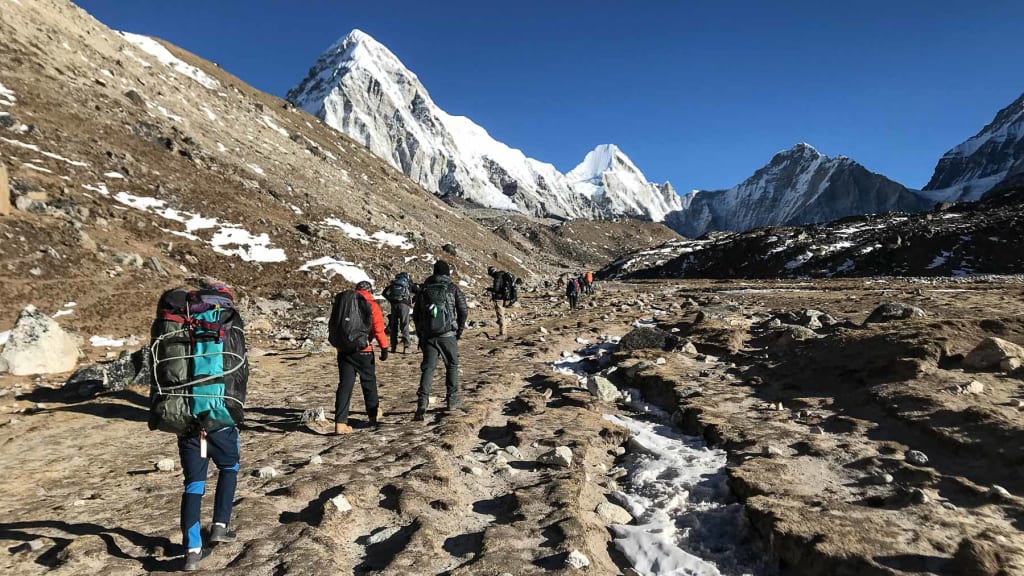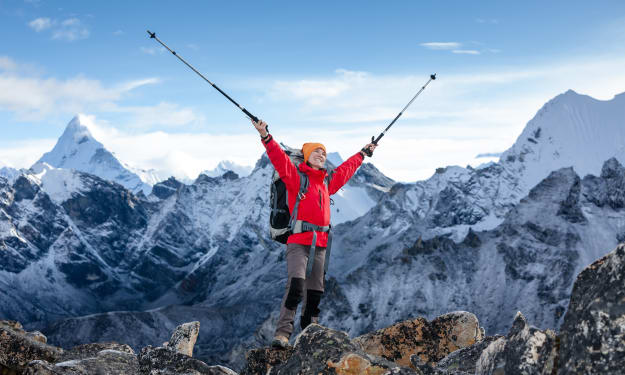Luxury Everest Base Camp Trek
Adventure with Luxury

Everest Base Camp Trek is one of the most famous trekking trails in the world. Most trekkers have a big dream to complete Mount Everest in their lifetime. Everest Trek is not only famous for trekking; you can experience the Sherpa Culture, which is close to Tibetan Culture, Terrace forest, Mountain birds, Scenic Everest Flight, etc.
This trek starts from Kathmandu by taking a flight to Lukla. On the first day, you will reach Lukla by flight and trek to Phakding or Monjo. Monjo and Phakding is a small town on the river bank. You can’t see the Himalayan view from these places. There are many small lodges with basic facilities, but we are talking about luxury lodges here. Here are two luxury lodges managed by Yeti Mountain Home.
Similarly, on the second day, you will reach Namche Bazaar. It's the capital town of the Sherpa People, and you will spend two nights here. On the third day, you will hike up to Everest View Hotel and back to Namche Bazaar for acclimatization. Also, you can go to the Khumjung Village for sightseeing. This acclimatization helps you to walk for the next day. On the next day, you will trek to Tengboche. Here is a famous monastery called Tengboche monastery. From Tengboche, you will walk to Dingboche. In Dingboche, you will also spend two more nights acclimatization.
From Dingboche, you will go to Lobuche and, the following day, trek to Gorak Shep via Everest Base Camp. From Gorak Shep, you will hike to Kala Patthar, the viewpoint of Mount Everest, and it is your final destination for Everest Base Camp Trek.
You can fly back to Kathmandu by helicopter or trek down to Lukla on the same route and fly back to Kathmandu and concludes Luxury Everest Base Camp Trek.
BEST TIME FOR LUXURY EVEREST BASE CAMP TOUR
The best time for Luxury Tour to Everest is March to Early June and September to early December. These are the best indicated time for EBC Ultra Luxury hiking due to the serine weather & climate condition of the place. The pleasing breeze sound and the slight-slippery trail remain mind-boggling. The adjacent sights are vibrant, and the mountains endure sparklingly delightful. Lesser (inclines to no) drizzle and non-slippery (less slippery) pathways are also imperative characteristics.
Spring Season
Everest Base Camp draws thousands of trekkers each year in spring for an incredible atmosphere and great views. The season offers a great walk to the visitors with overwhelming surroundings, warm sunshine, and pleasant weather conditions.
The temperature is slightly chillier at the beginning of March. But, with passing time, the weather gets more comfortable and better. The climate can be a little cold at a higher altitude, but it’s temperate with beautiful sunny days down in the valley.
Walking along the path, trekkers can witness the spectacular scenery of the hilly countryside, verdant hills, and steep-sided valleys. Everything comes to life in spring, whether the blooming flowers or wildlife waking up from hibernation.
The average temperature of the Everest Base Camp is 10 Degree Celsius between April and May. But after the end of the season, the temperature rises gradually, reaching up to 14 Degree Celsius. The days start getting hotter in June, following which trekkers prefer walking into the forest or under the canopy, which provides shade.
Autumn Season
Autumn is another beautiful time of the year to trek Everest Base Camp. Hikers can expect mellowy and warm weather conditions in the season. Autumn offers a mild climate with high humidity and precipitation, making trekking more convenient.
The air is crisp and often clear from mid-September to November. Trekkers get a strong vibe of autumn during October in the presence of colorful fall foliage, chilly air, and crowded trails.
Autumn brings a different festival to the valley and ensures to introduce it to the trekkers. Celebrations are happening in the villages, and even visitors are allowed to participate in them. They can perform songs and other traditional rituals followed by the locals.
November marks the end of the autumn season, following which the weather gets cold and a bit harsh. From the end of the month, days get shorter and darker, so trekkers must keep track of time. They’ll have to make it quick on the trail, or it’ll be impossible for them to reach the destination.
Off-Season
Winter and monsoon can be the season for hikers if you intend to go solo on the trail without any crowd. The weather is a bit harsh during the season, and extra precaution has to be taken. In monsoon, trekkers will have to deal with continuous showers, which makes the trail filthy.
As they become slippery, it gets tough to walk the faint trail. Trekkers can expect rainfall every day for three months, from mid-June to the end of September. Monsoon also witnesses some of the hottest days of the year, with temperatures rising to 22 Degree Celsius in the daytime.
But, once the rain has stopped, trekkers will get a crystal clear view of soaring snow peaks and vivid valleys. As the rain washes the dirt, trekkers will get a fresh breath of air.
Far off, winter weather is quietly cold with light snowfall and high winds. Temperatures are generally below Degree Celsius during the month, causing trekkers to shiver. The freezing weather and cold make the trek to Base Camp much more challenging than it is.
The trail at higher elevations is often layered in snow, so walking the path doesn’t get any easier in winter. Trekkers may even have to use spikes and hiking poles on the snowy trail for better traction. With it, they can quickly scale the ice-covered rocks and snowfield without suffering from frostbite.
Wearing gaiters also helps stay warm and avoid injuries while traveling the icefields and snow slopes. The views in winter are nothing less than a fairy tale with a dust of snow coats over houses and trees. Frozen lakes, snow-covered valleys, and mountains look magical in winter.





Comments
There are no comments for this story
Be the first to respond and start the conversation.